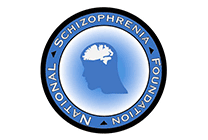 | | | 



| Historical Figures Related To Schizophrenia | |
|
|
|
  | | Phillipe Pinel (1745-1826) | | | Phillipe Pinel, one of the founders of modern psychiatry, was a major figure in early efforts to provide humane care and treatment for the mentally ill.
Although in the early years he had prepared for the priesthood, Pinel decided to change his course and study medicine. In 1789, he became a physician in his native France and wrote a book on the classification of diseases, which served as a standard medical textbook for schools of thought on clinical medicine.
The real crucial moment in Pinel's life came when a close friend of his became mentally ill, and during a psychotic break ran into a forest and was devoured by a pack of wolves. It was at this point that Pinel decided to devote his professional life to the care of the mentally ill.
For those of us with schizophrenia, May 24, 1793 is an important date. Earlier that year, Pinel had been appointed chief physician to Bicetre, the men's "insane" asylum in Paris. What he saw there horrified him. Many of the patients were restrained to the walls by chains. Some had been in restraints this way for 30 or 40 years.
Although the keepers in the asylum warned against it, Pinel took a bold and unprecedented move on that day in May to remove the chains from the patients who responded favorably without violence. He also did away with purging, bleeding and blistering and replaced these with simple psychological treatments. The results of these kinds of humane reforms were startling. Before Pinel, 60 percent of the mental patients at Bicetre died of disease, suicide or other causes within the first two years of admission. This number went down to 10 percent under Pinel (and went down even further as reforms continued.)
In 1795, Pinel was appointed as chief physician at Salpetriere, the female asylum in Paris. There he took the same steps he had in his previous post and went further. At Salpetriere, he fired the keepers who were cruel land ignorant and replaced them with personnel who were compassionate and enlightened. Also, while there he began the practice of keeping case histories of all the patients, thereby improving their long treatment and also serving as a basis for study of the course of mental illness well into the next century.
Under Pinel, the place of residence for the mentally ill converted from a madhouse to a hospital. His reforms were soon copied all over Europe.
In 1806, Pinel produced his Treatise on Insanity, one of the great classics of psychiatry. In this, Pinel developed a four-part diagnostic classification for the major mental illnesses: melancholy, dementia, mania without delirium and the same with delirium. He also described the nature of hallucinations reported by his patients. Pinel also stated his rejection on the theory of humors, a form of medieval medicine.
In terms of personality, Pinel was gentle and sensitive, self-composed, severe when faced with brutality, and emotionally aloof. He had a deep scholarly inclination. He also served as a professor at the university of Paris and as Napolean's personal physician for a time.
Perhaps Pinel's major contribution was to view the mentally ill as sick human beings, deserving of dignity and requiring medical treatment. Pinel was still working in the Paris mental hospitals when he died in 1826. Dignitaries from all over the continent attended his state funeral. |
|
|
